LECTURE 2 презентация
Содержание
- 2. An Outline Grammatical categories of the Noun in OE The
- 3. PIE had been an inflected language and PG had retained inflections
- 4. Noun Grammatical categories: Case Number Gender Noun declensions
- 5. The Category of Case 4 cases: Nominative (the subject case),
- 6. The Category of Number Sg. and Pl. Nominative dæġ
- 7. The Category of Gender MFN Present-day English has only natural gender,
- 8. Noun declensions A group of nouns which all have the same
- 9. Types of declensions in OE: strong declension weak declension root
- 10. strong declension a-stems, ō-stems, i-stems, u-stems.
- 11. strong declension (a-stems masculine) Singular Plural stān
- 12. The a-stems form the most important declension for the later history
- 13. weak declension n-stems nouns This declension gave the later -en plural
- 15. Root declension Its most obvious characteristic is that they should have
- 16. Singular Plural Singular Plural Nom. fōt
- 17. OE Adjectives Grammatical categories: 1) Number; 2) Case; 3) Gender; Degrees
- 18. OE Verb The categories of OE Verb: The category of Person
- 19. The progressive constructions: Cf. Europe hio onginð... of Danai þære
- 20. The perfect and plusperfect constructions Cf. Ic hæbbe gebunden þone feond;
- 21. Passive constructions OE he gefeaht wiþ Gotan, & gefliemed weard &
- 22. Morphological classes of OE verbs strong, weak, preterit-presents,
- 23. A peculiar feature of the Germanic languages was the division of
- 24. Strong verbs 7 classes or “ablaut series” Four forms: the infinitive,
- 25. I. drīfan drāf drifon (ge) drifen II. cēosan cēas
- 26. Weak verbs Three forms: present infinitive; past tense; past participle.
- 28. OE Syntax OE was a highly inflected language. Meaning was
- 29. Скачать презентацию





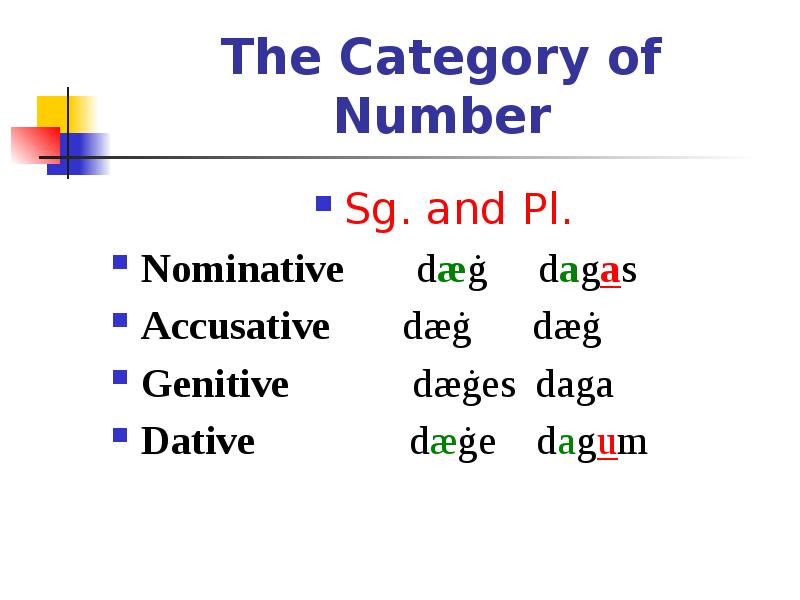

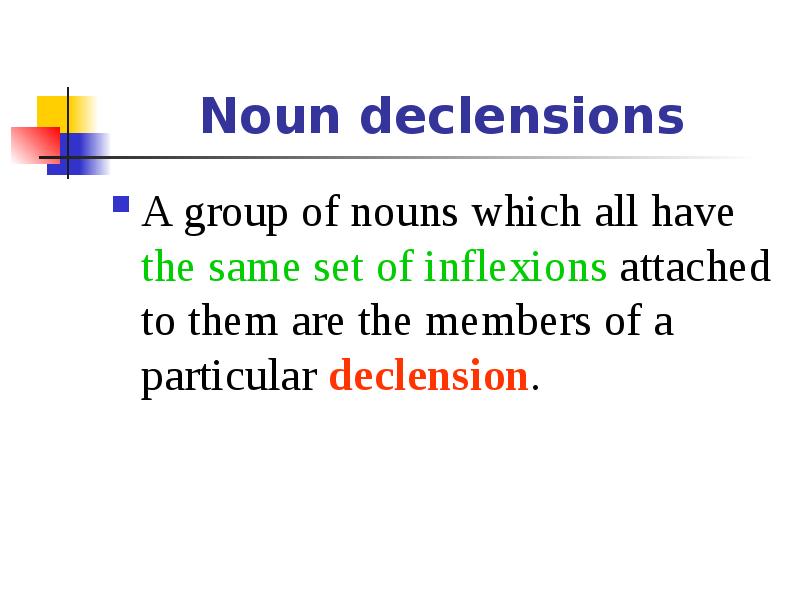

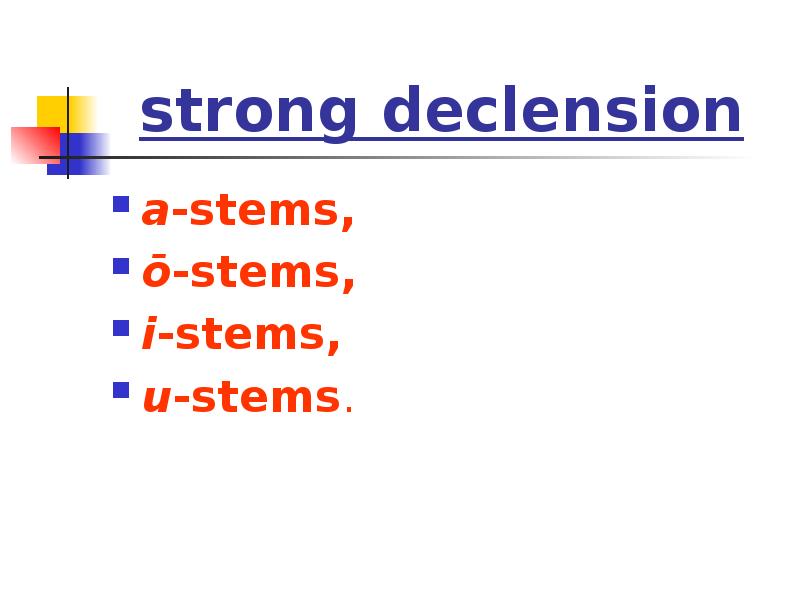
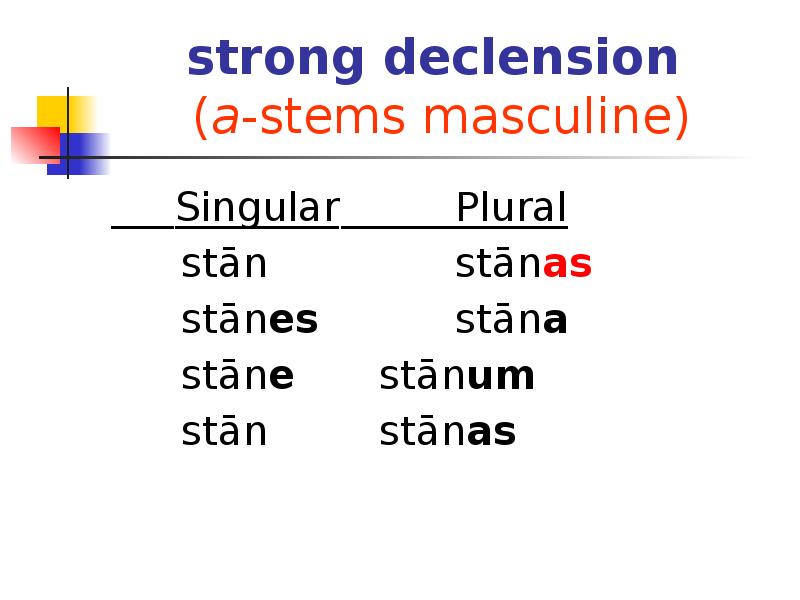
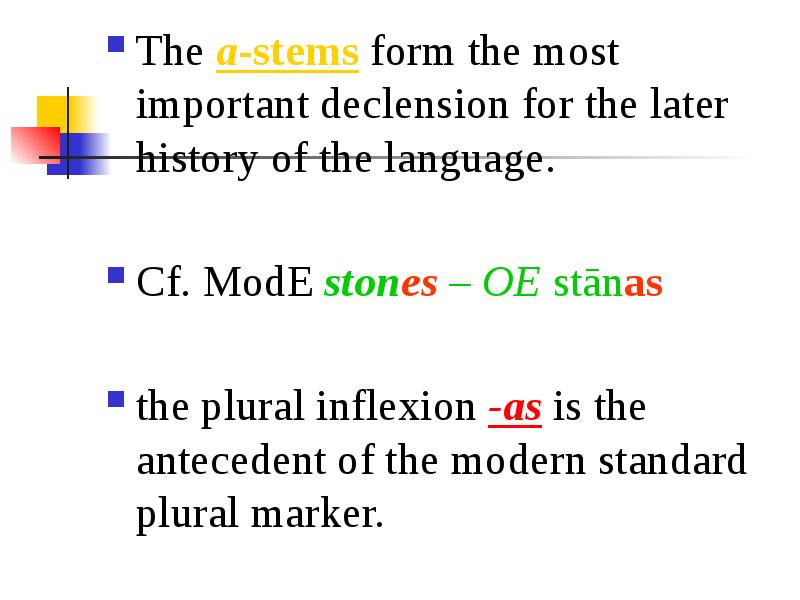
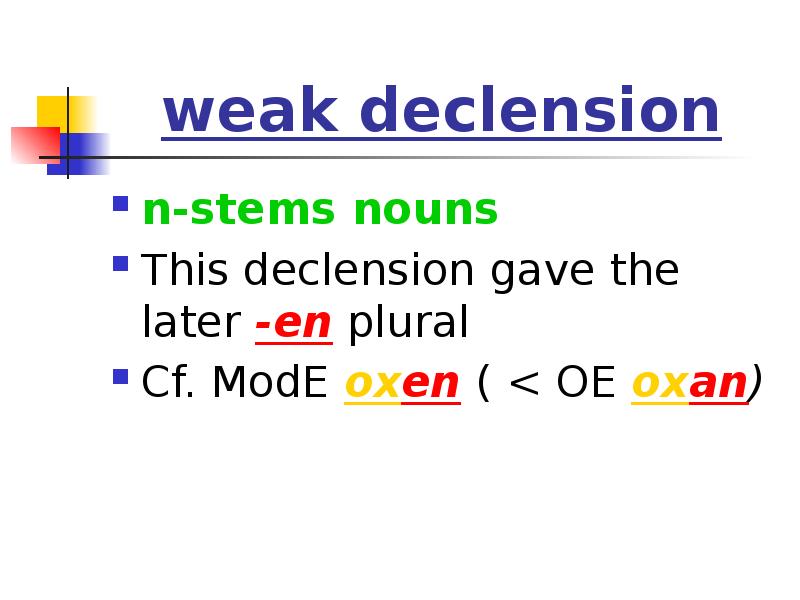
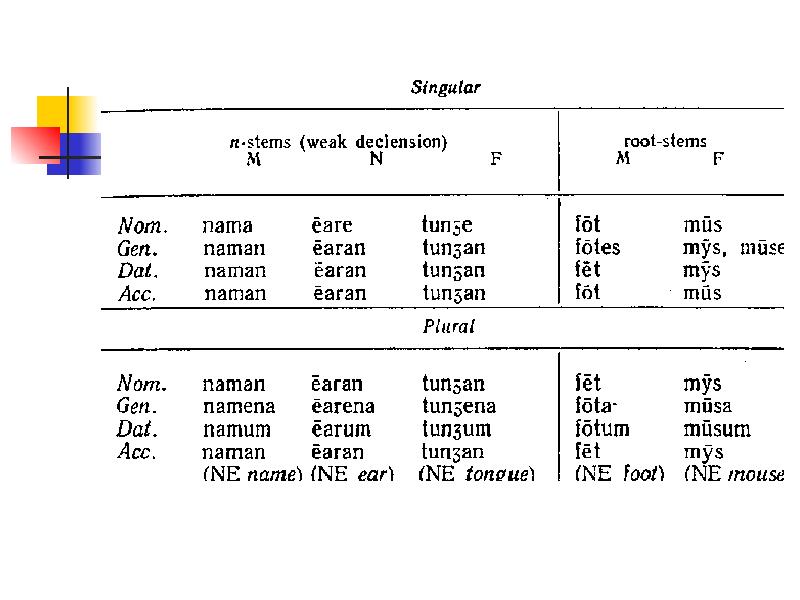
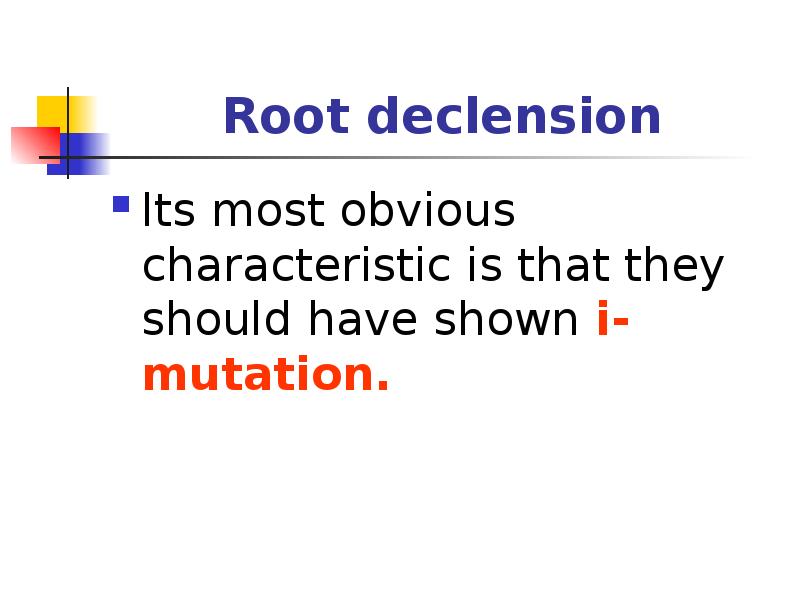
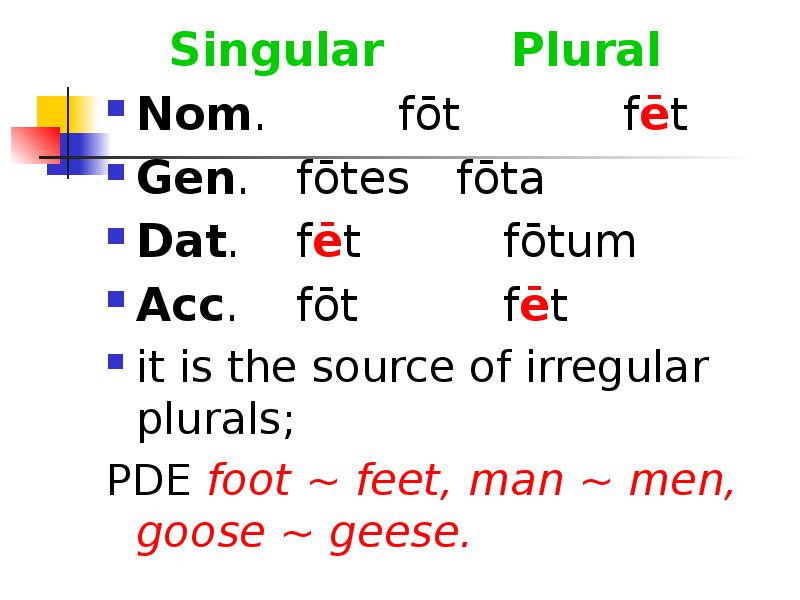
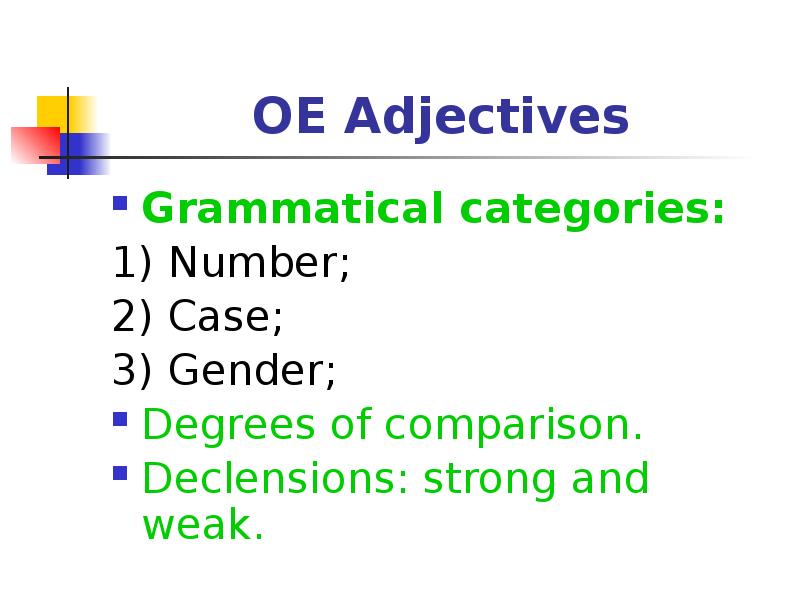
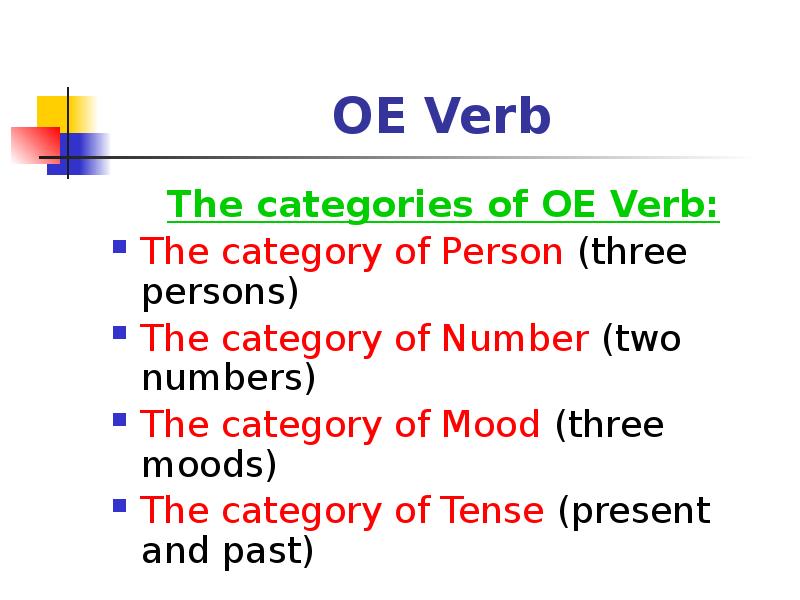
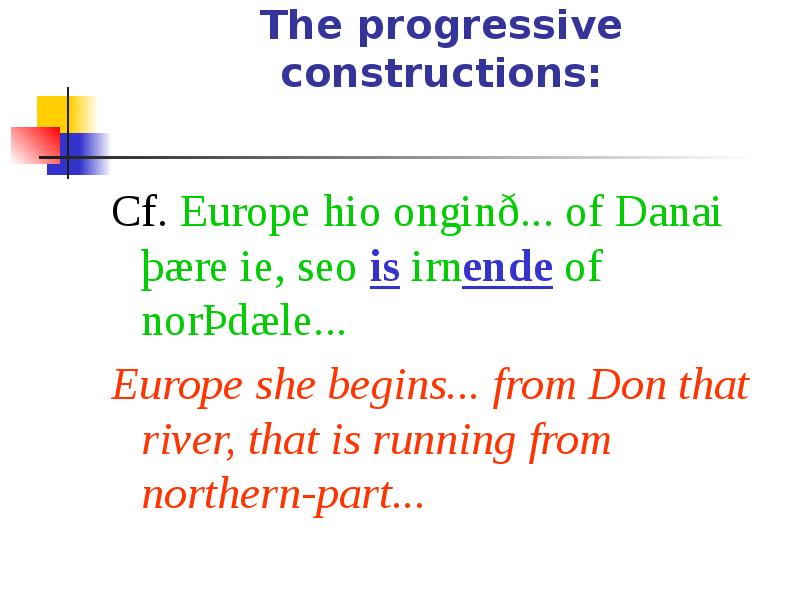
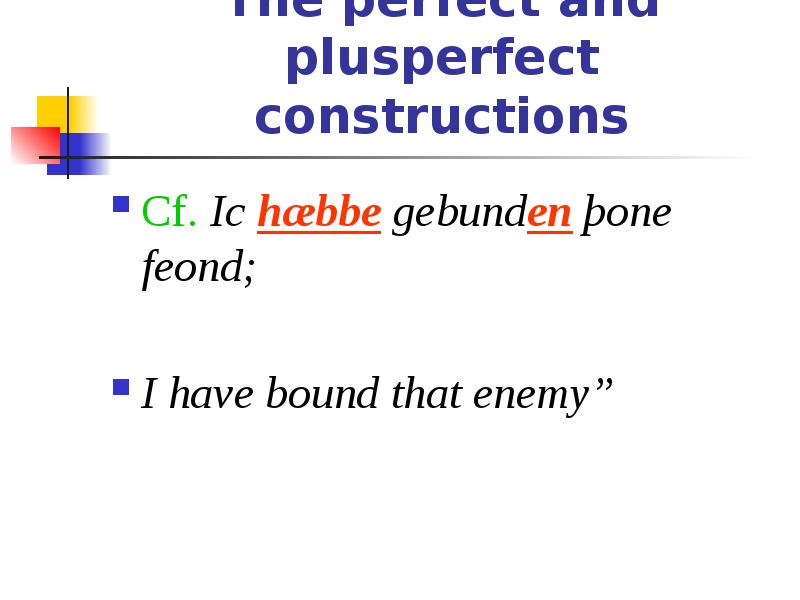
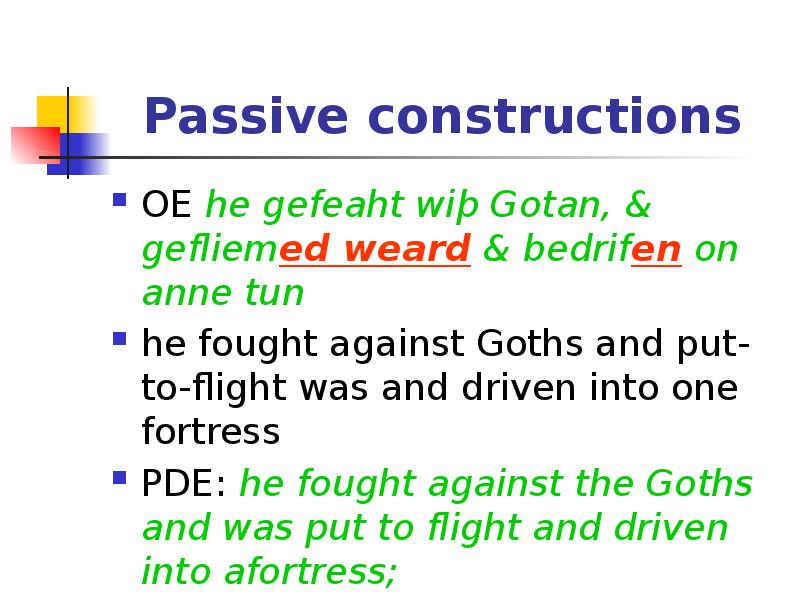
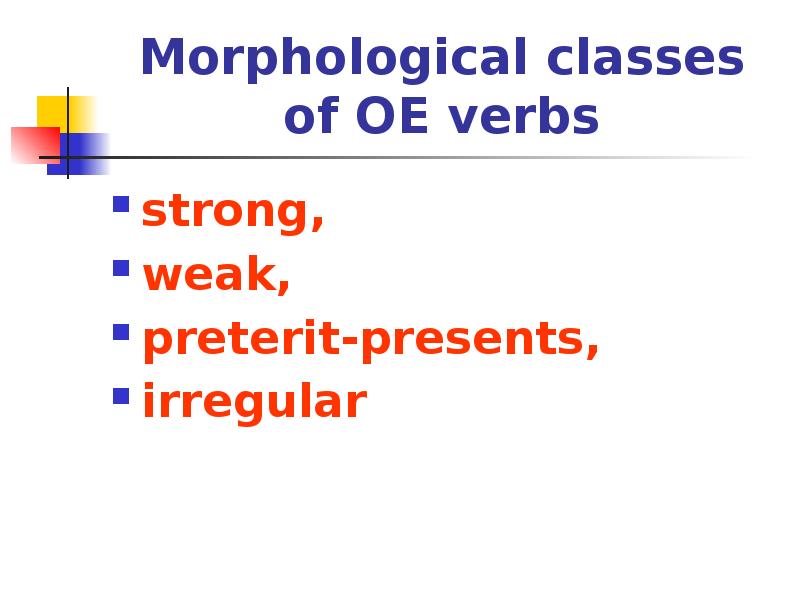
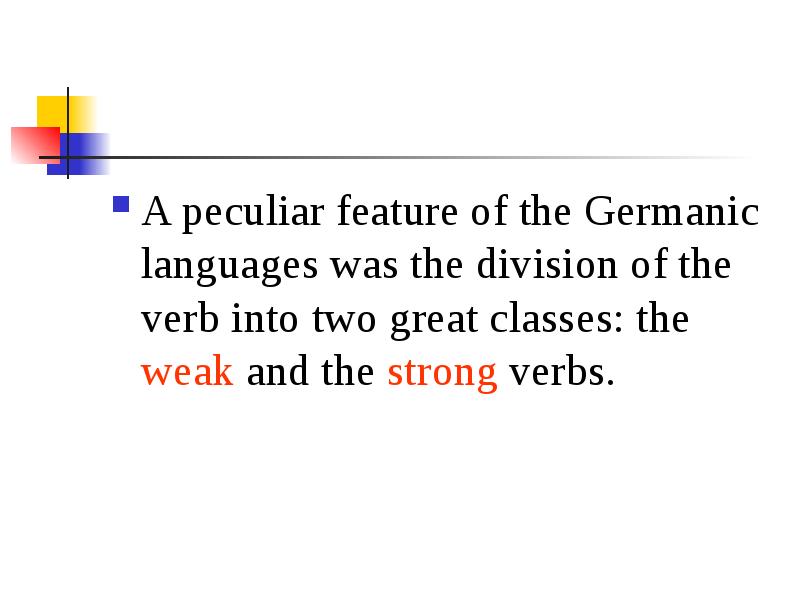
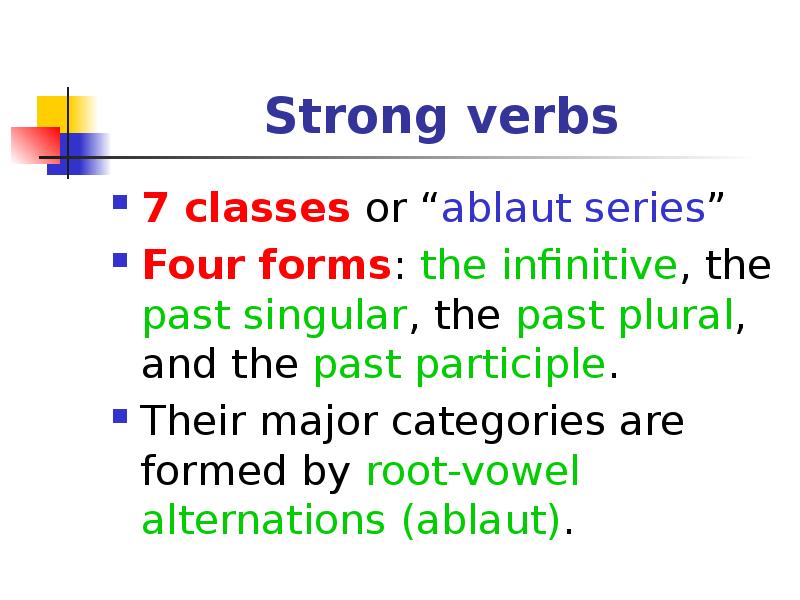
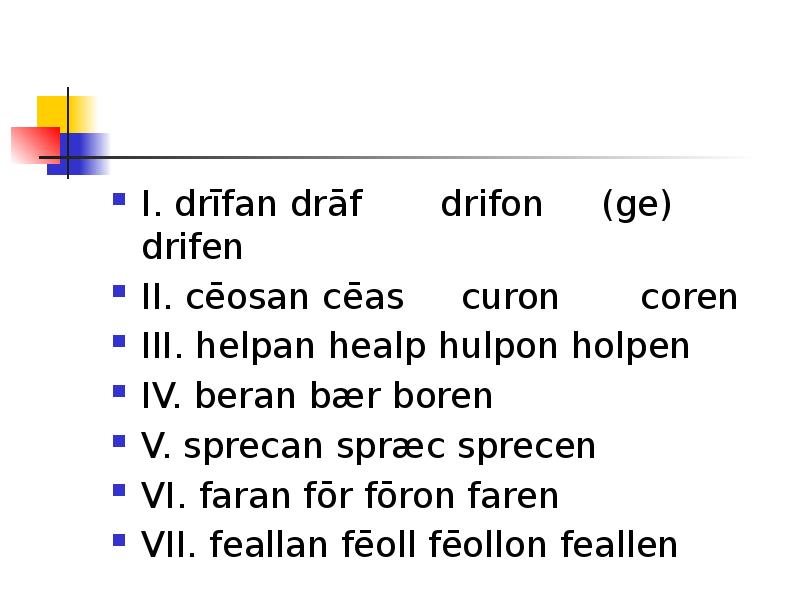
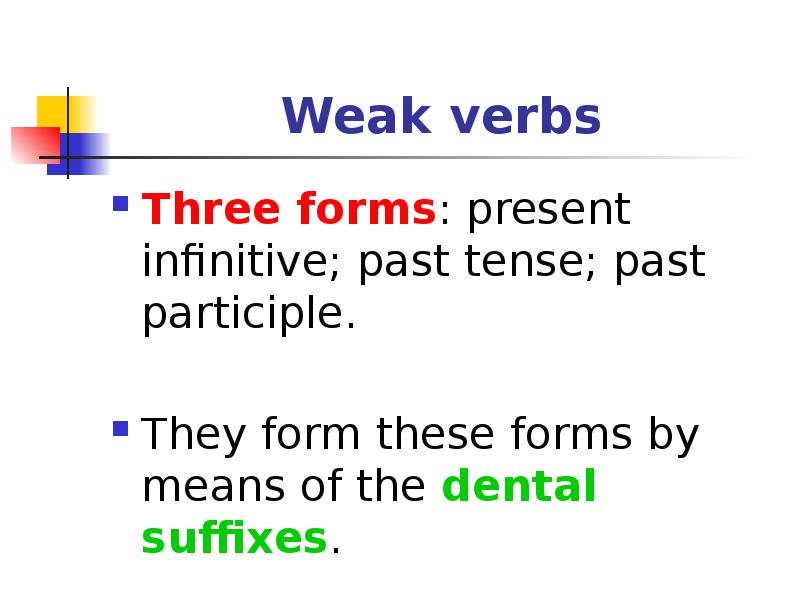
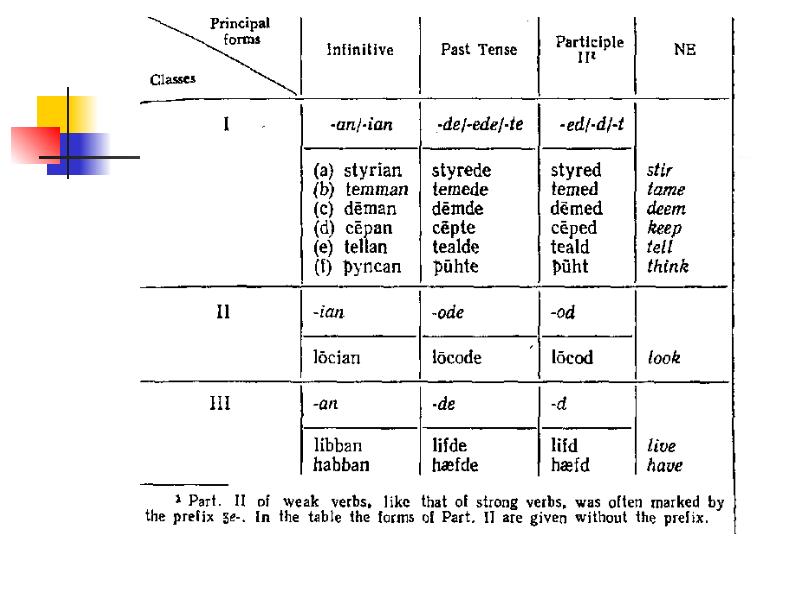
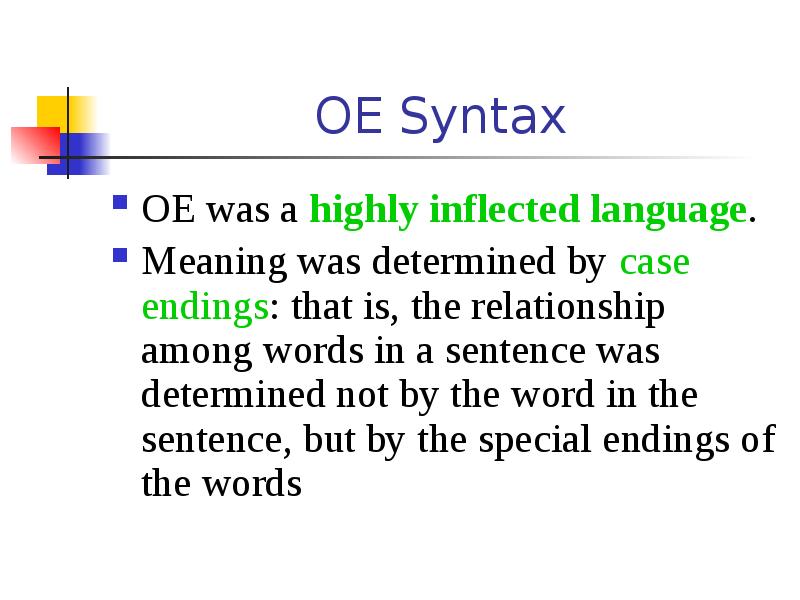
Слайды и текст этой презентации
Похожие презентации





























